Key takeaways:
- Film trailers are essential for creating anticipation and connecting with audiences, often telling a story in mere seconds.
- A compelling trailer incorporates elements like pacing, music, and character introductions to evoke strong emotions and draw viewers in.
- The trailer-making process involves overcoming logistical challenges, such as tight deadlines and ensuring audience resonance through feedback.
- Effective trailer editing requires a focus on storytelling and sound design, creating an engaging experience that enhances the film’s narrative.

Understanding film trailers
Film trailers serve as a pivotal bridge between a film’s creation and its audience. When I first delved into trailer production, I was struck by how each frame tells a story, often in mere seconds, crafting suspense that grips viewers. Have you ever wondered how a fleeting glimpse of a scene can ignite such anticipation?
Understanding the techniques behind trailers can be enlightening. I remember the thrill of piecing together clips from various parts of a film to create a cohesive narrative. Each selection is a deliberate choice, designed to evoke emotion without giving away too much; it’s a balancing act that can transform a casual viewer into a committed fan.
There’s an artistry in choosing the right music and voiceover to accentuate visuals. I recall editing one trailer where the score elevated a simple action sequence into something epic. It made me realize that a well-crafted trailer can leave a lasting impression, prompting audiences to eagerly await the film’s release. How do you feel when a trailer resonates with you? That connection is what every creator aims to achieve.
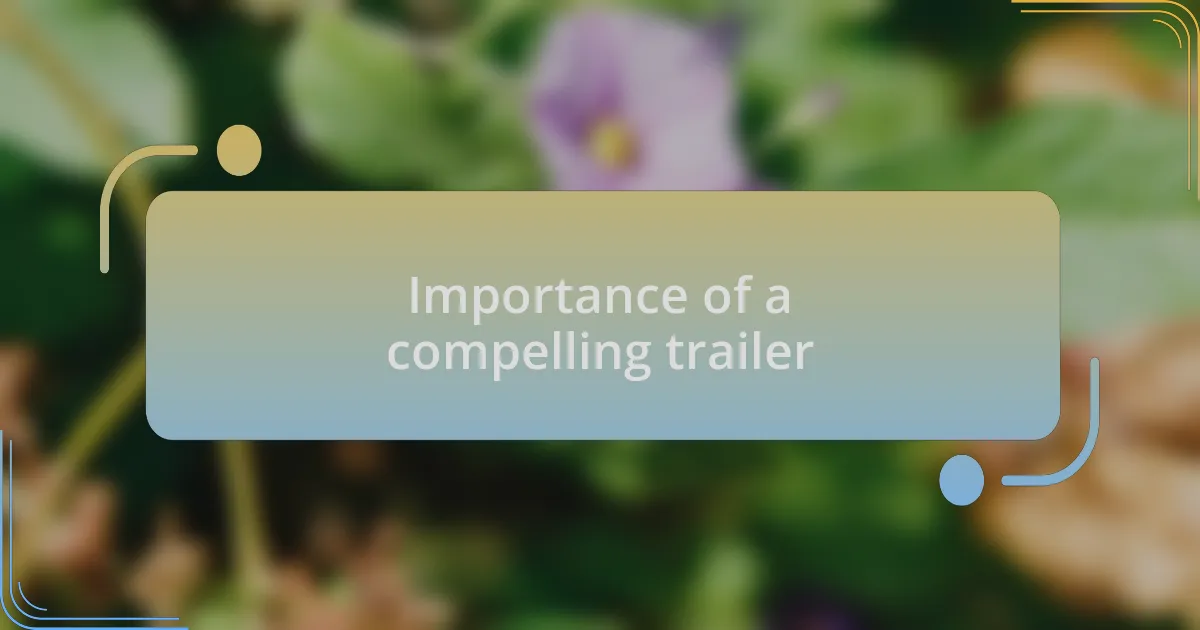
Importance of a compelling trailer
A compelling trailer is crucial because it serves as the first handshake between the film and potential viewers. When I was involved in a project where we crafted a trailer, it was fascinating to witness how a carefully chosen scene could evoke a rush of excitement or curiosity. It made me realize that the right trailer doesn’t just present a film; it sells an experience, enticing audiences to step into the world we’ve created.
Reflecting on my experiences, I’ve seen trailers turn around a film’s destiny. In one instance, we highlighted a pivotal emotional moment from the film that resonated deeply with viewers, pulling them in. The questions I’m left with—how do we make them laugh, cry, or feel suspense in just a few moments?—are what drive the creation of a great trailer. It’s this magnetism that compels an audience to make the leap from intrigue to ticket purchase.
The emotional weight that a trailer carries can’t be underestimated. I recall being part of a team that spent days perfecting the timing of cuts and the integration of sound, striving to strike that delicate balance. A well-made trailer can spark conversations and ignite fandom before the movie even hits the theaters. It’s not just promotional material; it’s a compelling invitation to a journey that viewers yearn to embark on.
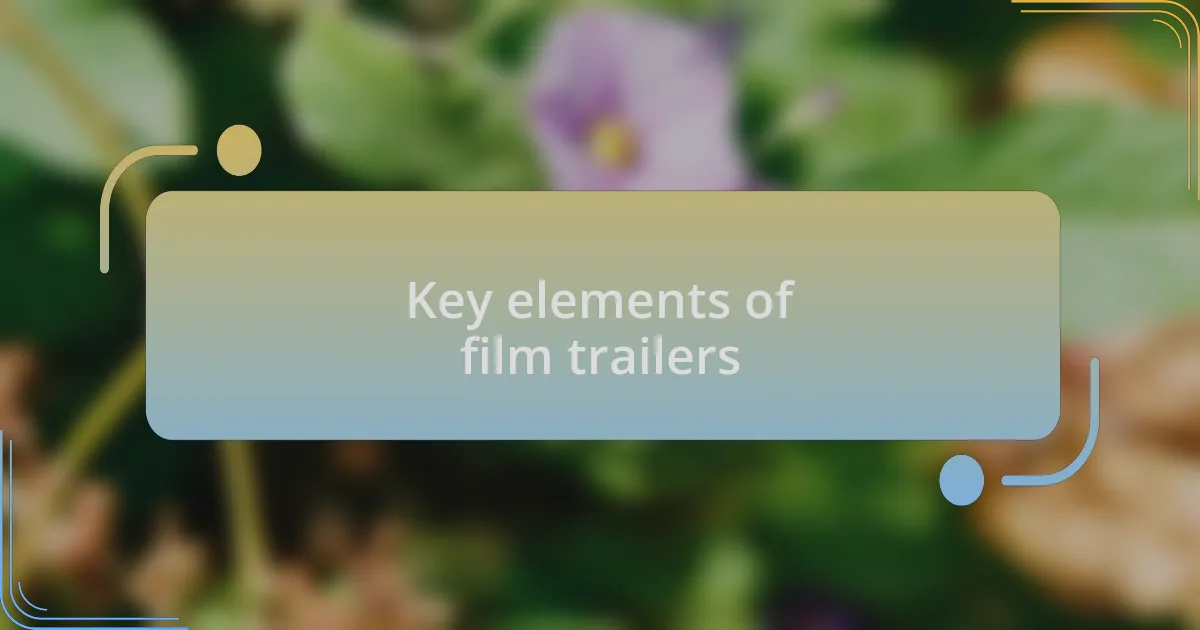
Key elements of film trailers
Crafting an effective film trailer hinges on a few key elements that foster connection. For instance, using a striking opening shot can immediately draw audiences in. I remember when we led with a breathtaking landscape that set the film’s tone instantly; it was as if we were inviting viewers into a vast world filled with possibilities. This initial hook is critical—it begs the question: will the story be as grand as the visuals suggest?
Equally vital is the trailer’s pacing, which I’ve learned can make or break the entire experience. During a project, we experimented with varying tempos, allowing quieter moments to breathe before ramping up to exhilarating action sequences. This ebb and flow of energy creates an emotional rollercoaster, engaging the viewer’s heart as much as their mind. I’ve noticed that trailers that master this rhythm often leave a lingering impact—why else would we still be talking about them days later?
Finally, the careful selection of music plays an indispensable role in evoking emotion. I once worked on a trailer where we used an iconic score that resonated deeply with the film’s themes. The moment that melody started, it transformed the visuals from mere clips into a narrative. Music has a unique ability to communicate feelings that words cannot, making me wonder—how can we not prioritize it when crafting a story meant to resonate with audiences?
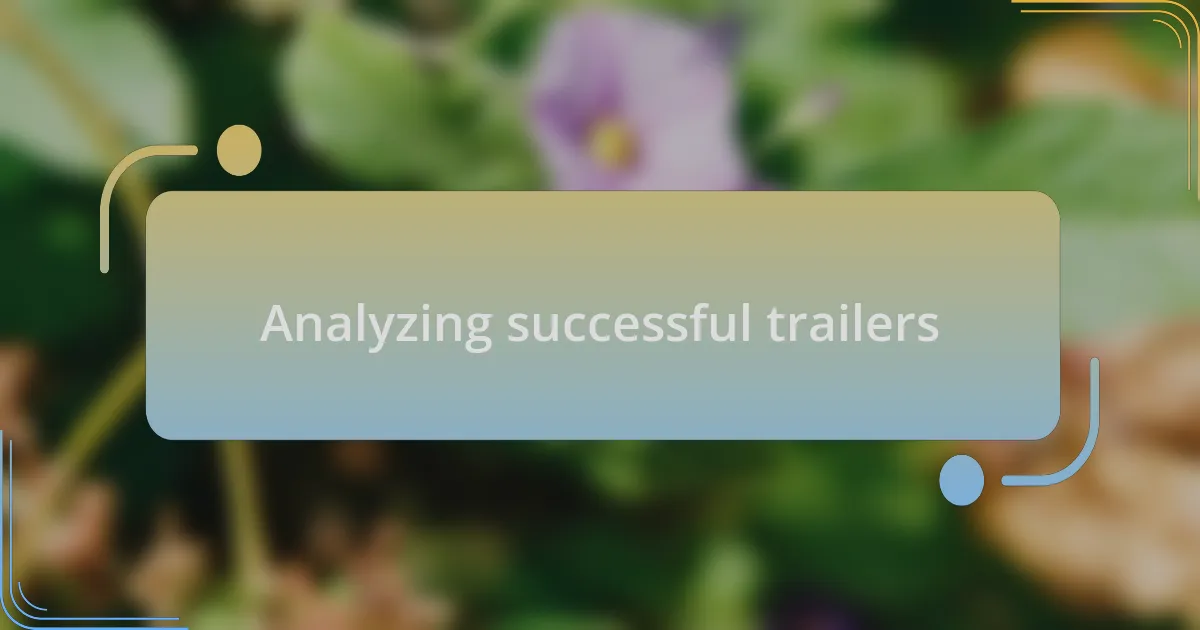
Analyzing successful trailers
When I analyze successful trailers, one element that often stands out is their use of compelling character introductions. I recall a particular trailer featuring a profound character reveal that not only captured the essence of the protagonist but also hinted at their conflicting motivations. That moment made me wonder, isn’t it fascinating how a single line or glance can convey a character’s depth and intrigue? It plants a seed of curiosity that keeps viewers coming back for more.
Another aspect to consider is the clever use of visuals and imagery. In a trailer I worked on, we were careful to include striking visual motifs that tied back to the film’s core themes. This approach enhanced the trailer’s allure, prompting audiences to engage on a deeper level. I often think, how can we resist the pull of a well-crafted visual story? It’s these stylistic choices that differentiate a trailer from a simple montage of clips.
Lastly, successful trailers often incorporate voiceovers that lend an air of mystery or urgency. I vividly remember the impact when we used a dramatic voiceover that posed a haunting question at the climax of the trailer. It not only heightened the suspense but also left audiences pondering the deeper implications of the narrative. Isn’t it remarkable how words can haunt us, making our minds race with possibilities long after the trailer ends?
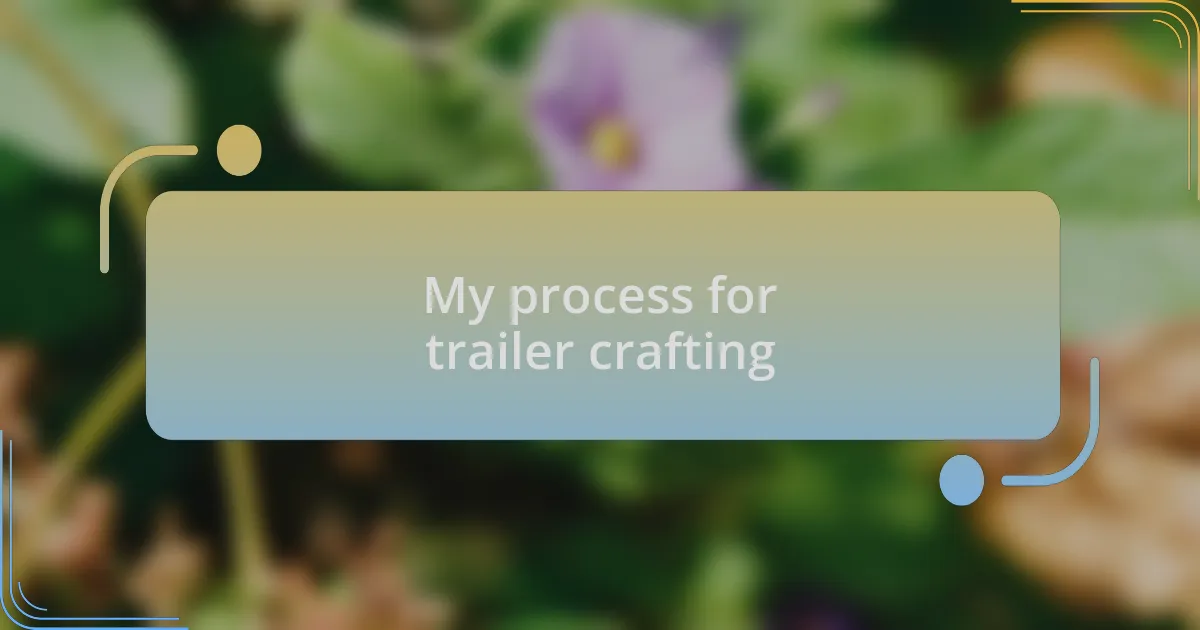
My process for trailer crafting
When I embark on crafting a trailer, my first step is to delve deep into the story’s emotional core. I remember one project where I took the time to sit with the screenplay, highlighting scenes that sparked genuine emotion. It became clear to me that the most powerful trailers evoke feelings, not just showcase moments. Have you ever felt a chill from a perfectly timed shot? That’s what I aim for—the rush of a moment that lingers with the viewer.
Next, I focus on pacing, which I believe is nearly an art form in itself. In one instance, I experimented with the rhythm of cuts, balancing fast-paced action sequences with quieter, more contemplative moments. The contrast created a palpable tension that felt almost like a heartbeat. This process led me to ask: how do we keep viewers on the edge of their seats while also pulling them into the film’s world? Balancing these elements is key, and it often feels like a dance between excitement and anticipation.
Finally, sound design plays a pivotal role in my trailer crafting process. I vividly recall a moment when we layered music and sound effects in a way that transformed the experience. That particular trailer became an immersive journey, with audio cues guiding the emotional tone. Isn’t it astonishing how sound can elevate a visual experience? For me, sound is not just background noise; it’s a character that shapes the viewer’s perception and reinforces the narrative’s heartbeat.
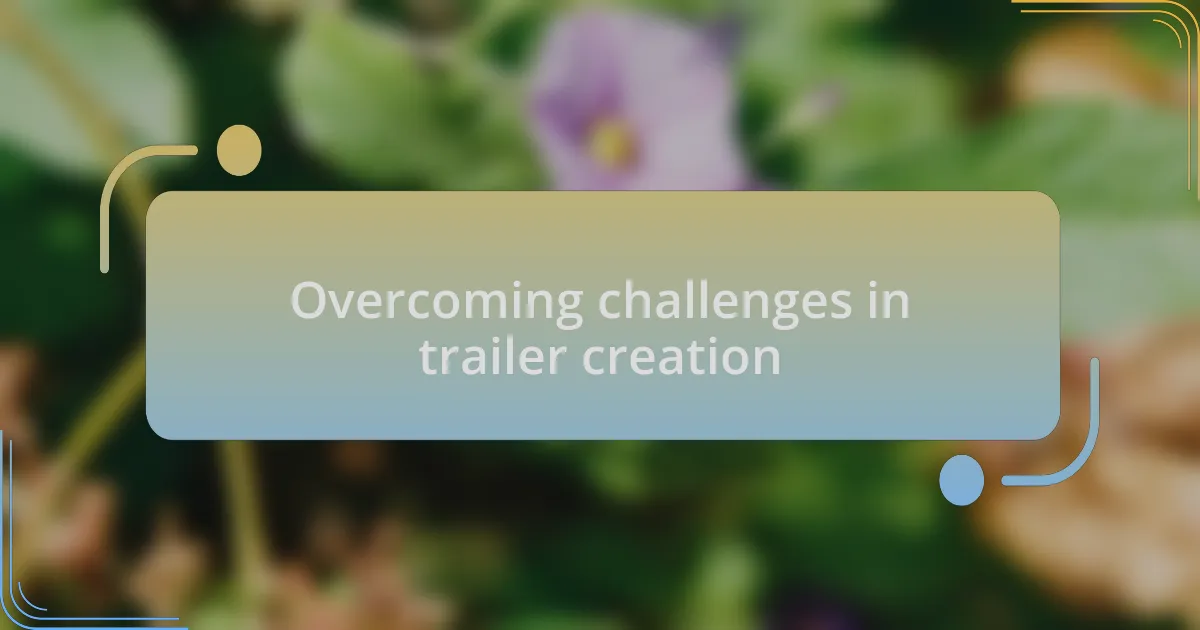
Overcoming challenges in trailer creation
Crafting a compelling trailer often means navigating a minefield of logistical challenges. I recall grappling with a tight deadline during one project; securing the best footage felt like finding a needle in a haystack. It forced me to reassess my strategy and prioritize key scenes that encapsulated the essence of the film while making a strong impression in just a couple of minutes.
Another challenge I frequently encounter is ensuring the trailer resonates with the target audience. Early in my career, I produced a trailer that I felt was perfect, yet it fell flat in testing. This taught me the importance of audience feedback. I now actively seek input during the trailer creation process, making adjustments that align with viewers’ expectations and emotional responses. Have you ever shared something you loved, only to find that others didn’t feel the same way? That moment of realization is a humbling, yet crucial step in my workflow.
Sometimes, it’s the technical aspects that trip me up, like syncing visuals with sound perfectly. I once spent hours tweaking a single transition, trying to get it just right. That experience highlighted how every frame and sound matters when building anticipation. The satisfaction that follows, however, when the final product reflects a seamless blend of audio and visuals, is incredibly rewarding. How do I measure success? Ultimately, it’s when my work stirs emotions and ignites conversations among audiences.

Tips for effective trailer editing
When editing a trailer, pacing is crucial. I remember a time when I tightened the pacing of a trailer based on feedback that felt sluggish to viewers. The moment I cut unnecessary seconds from a slow scene, it transformed the trailer into a pulse-pounding preview that left audiences eager for more. Have you ever noticed how a quick cut can elevate tension instantly?
Incorporating effective storytelling is another tip I cherish. While working on a recent project, I focused on weaving the main character’s journey through the trailer. By highlighting pivotal moments, I not only captured the film’s essence but also created emotional stakes that resonated deeply with potential viewers. That’s the magic of storytelling—when the audience can connect with a character in just a few frames, it’s a powerful hook.
Finally, never underestimate the impact of sound design. I vividly recall crafting a trailer where each soundbite and piece of music was meticulously chosen to enhance the visuals. The right audio can evoke emotions that visuals alone sometimes can’t, transforming a good trailer into a great one. What elements do you think give a trailer its emotional punch? For me, it’s that perfect blend of visuals and sound that really captivates.